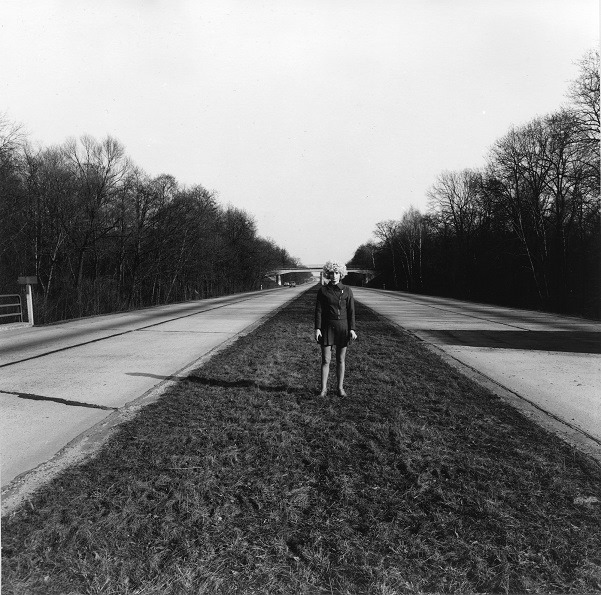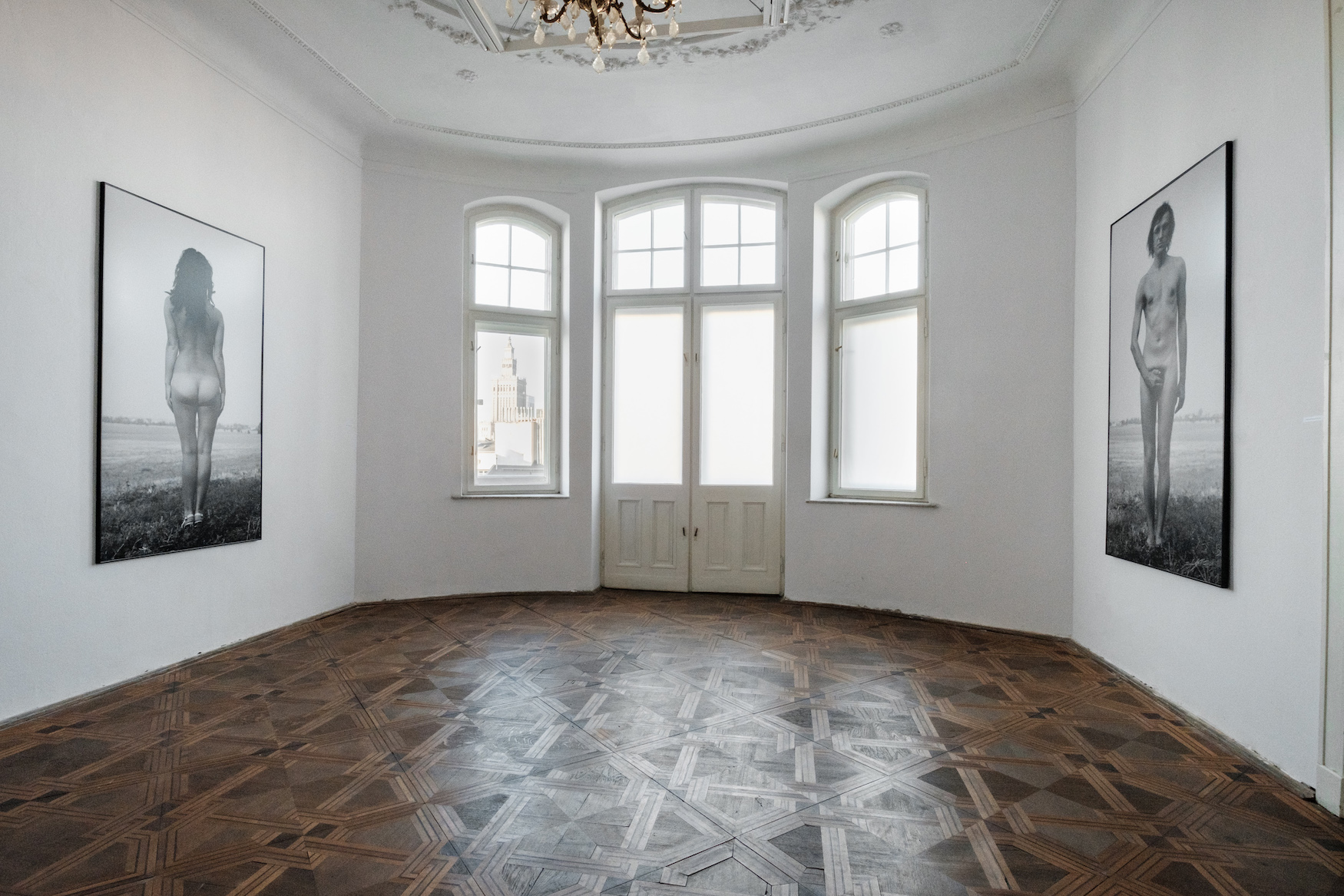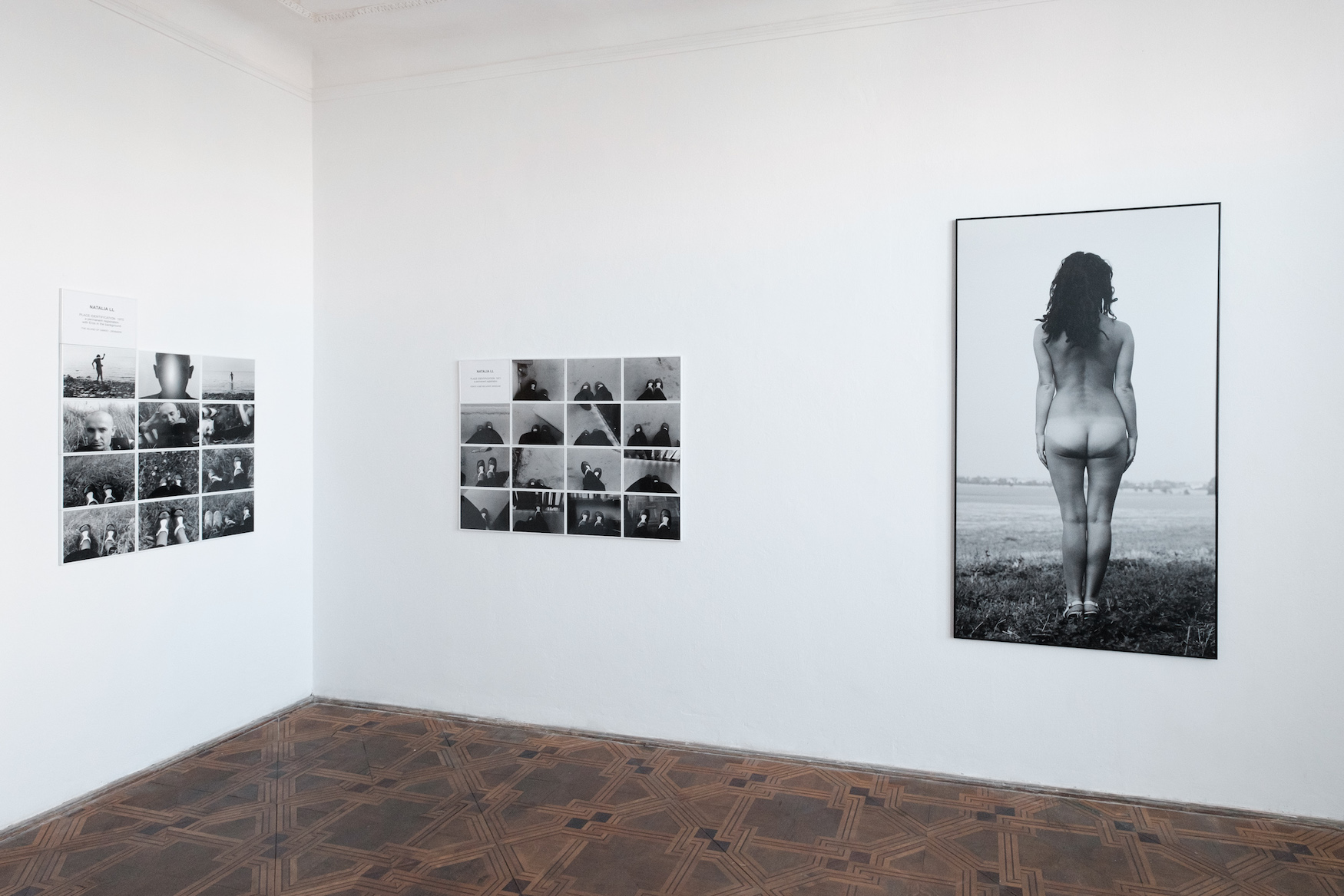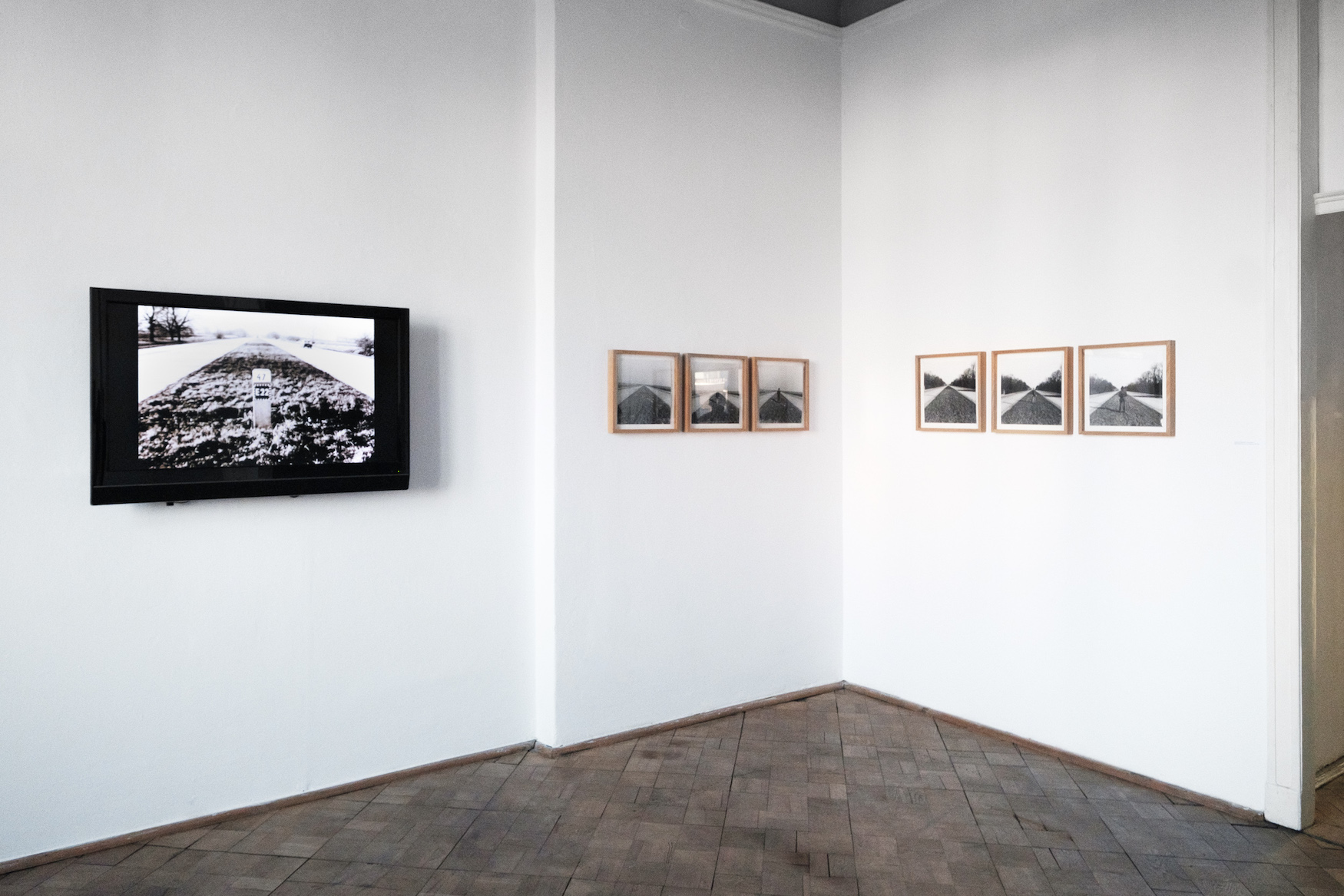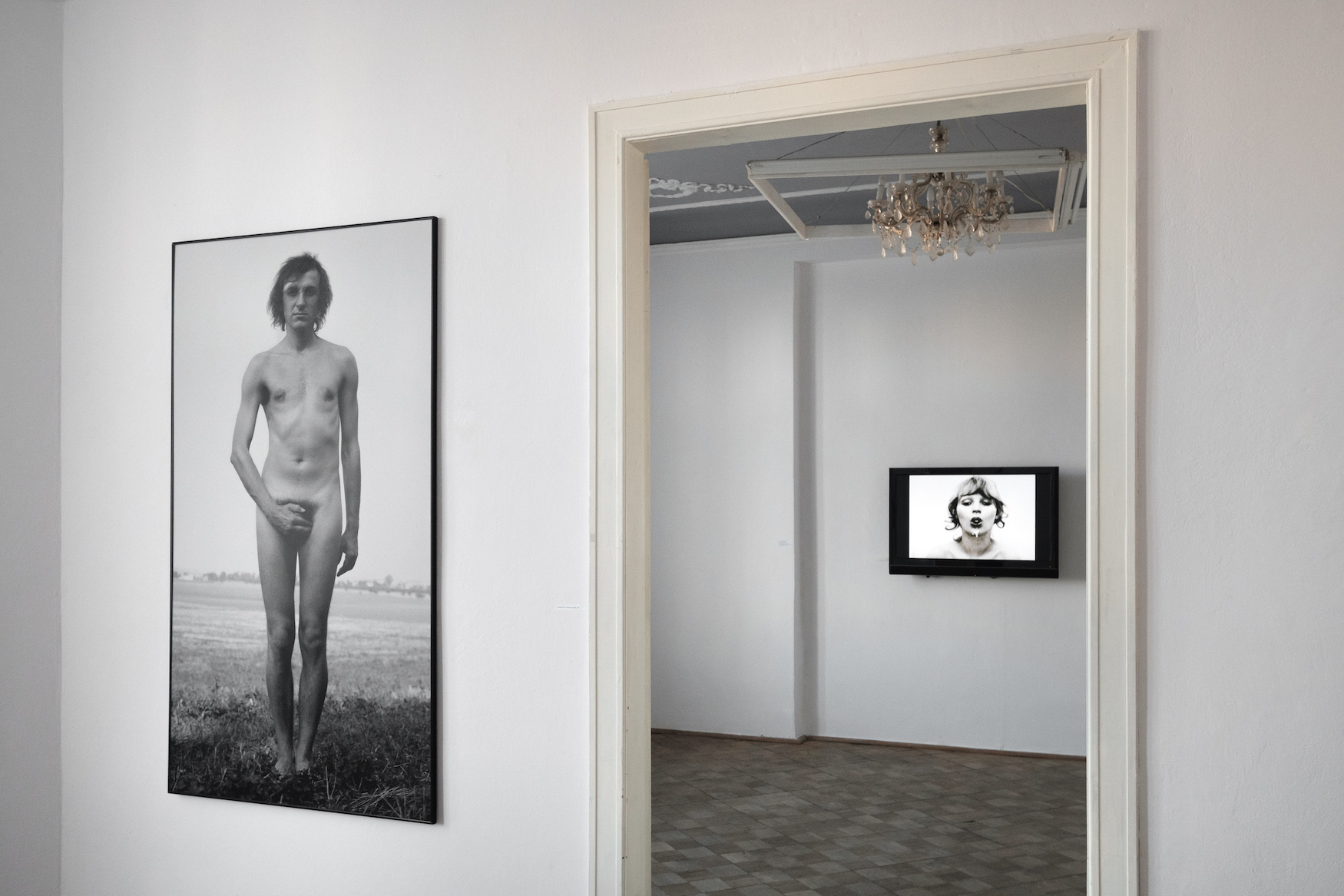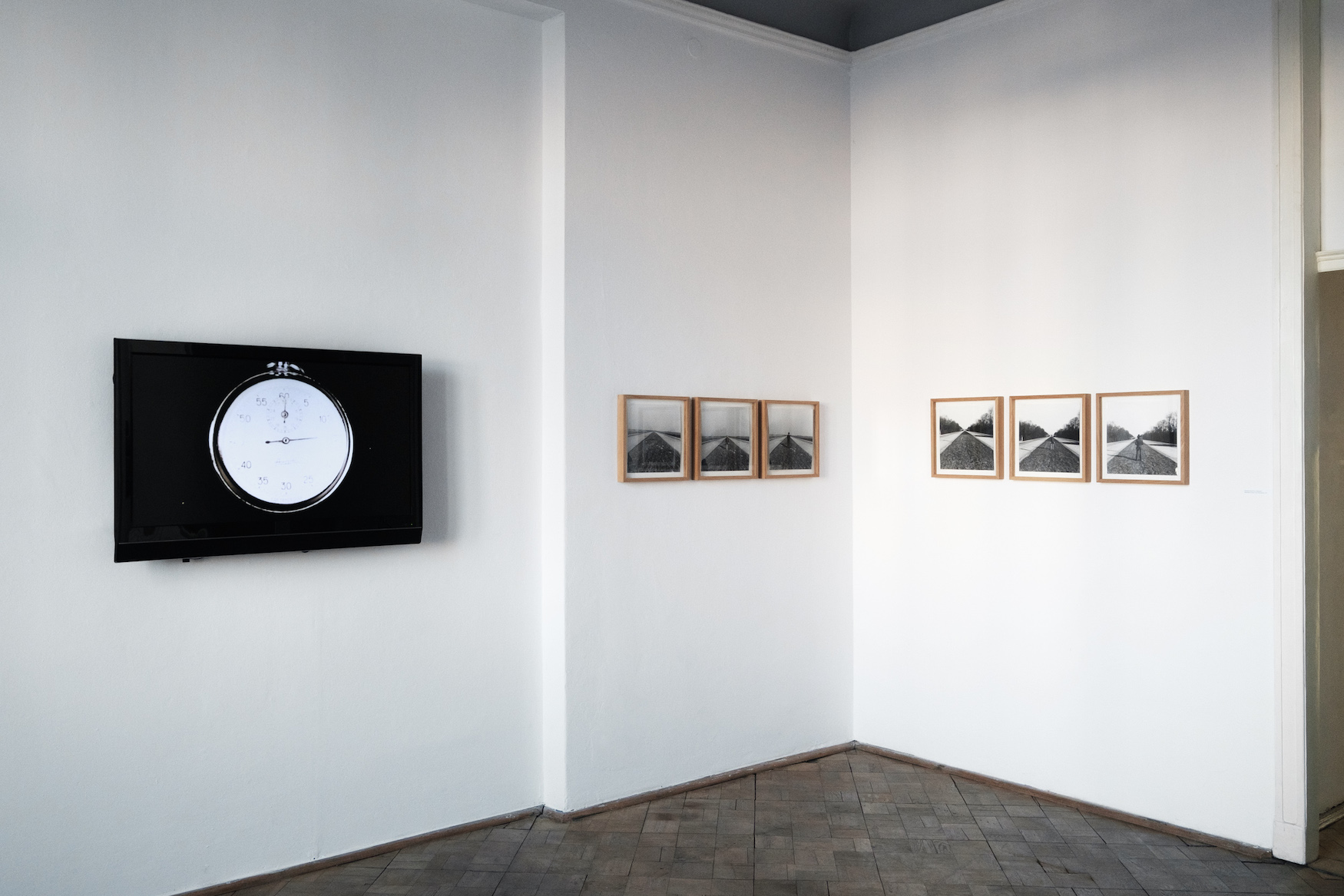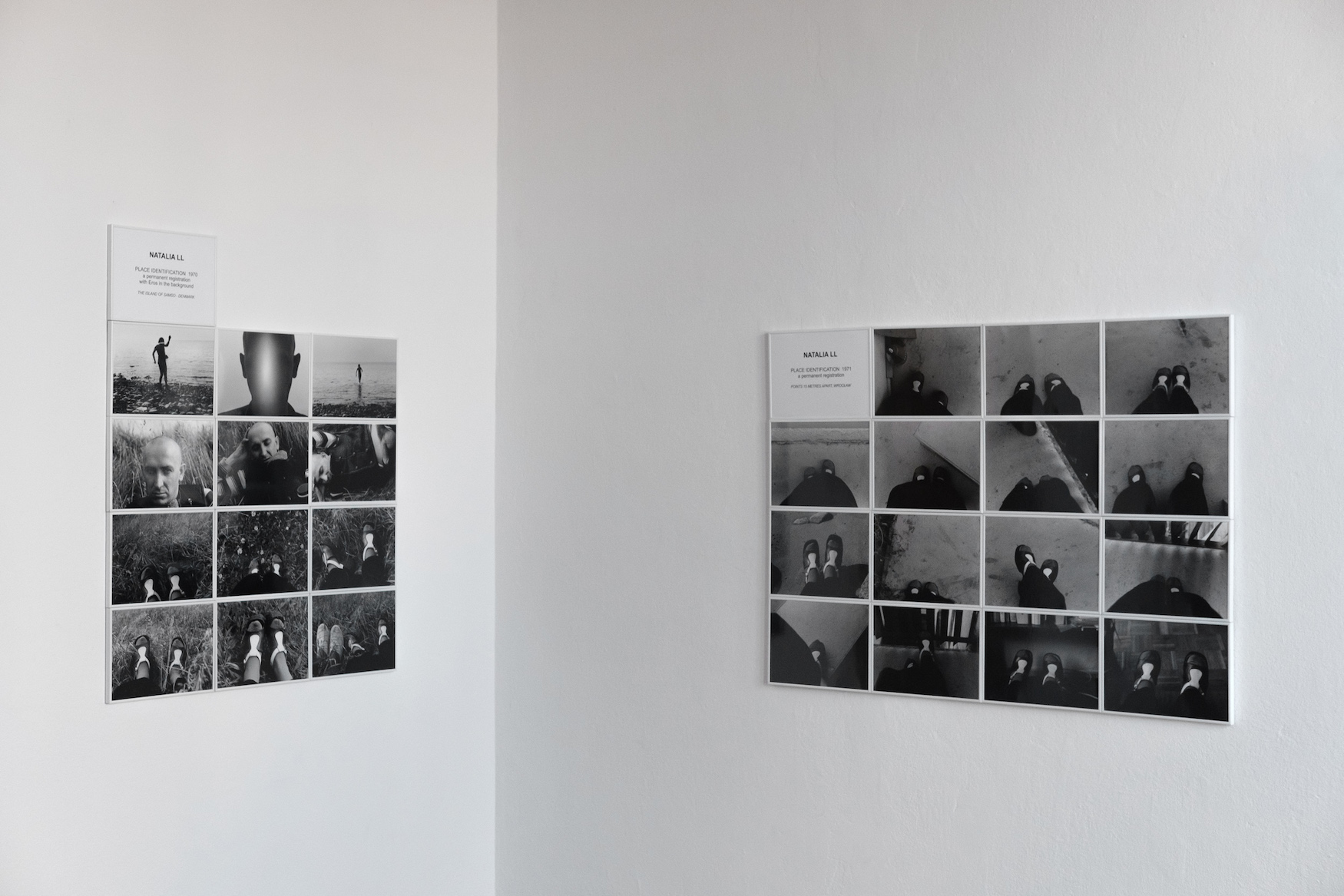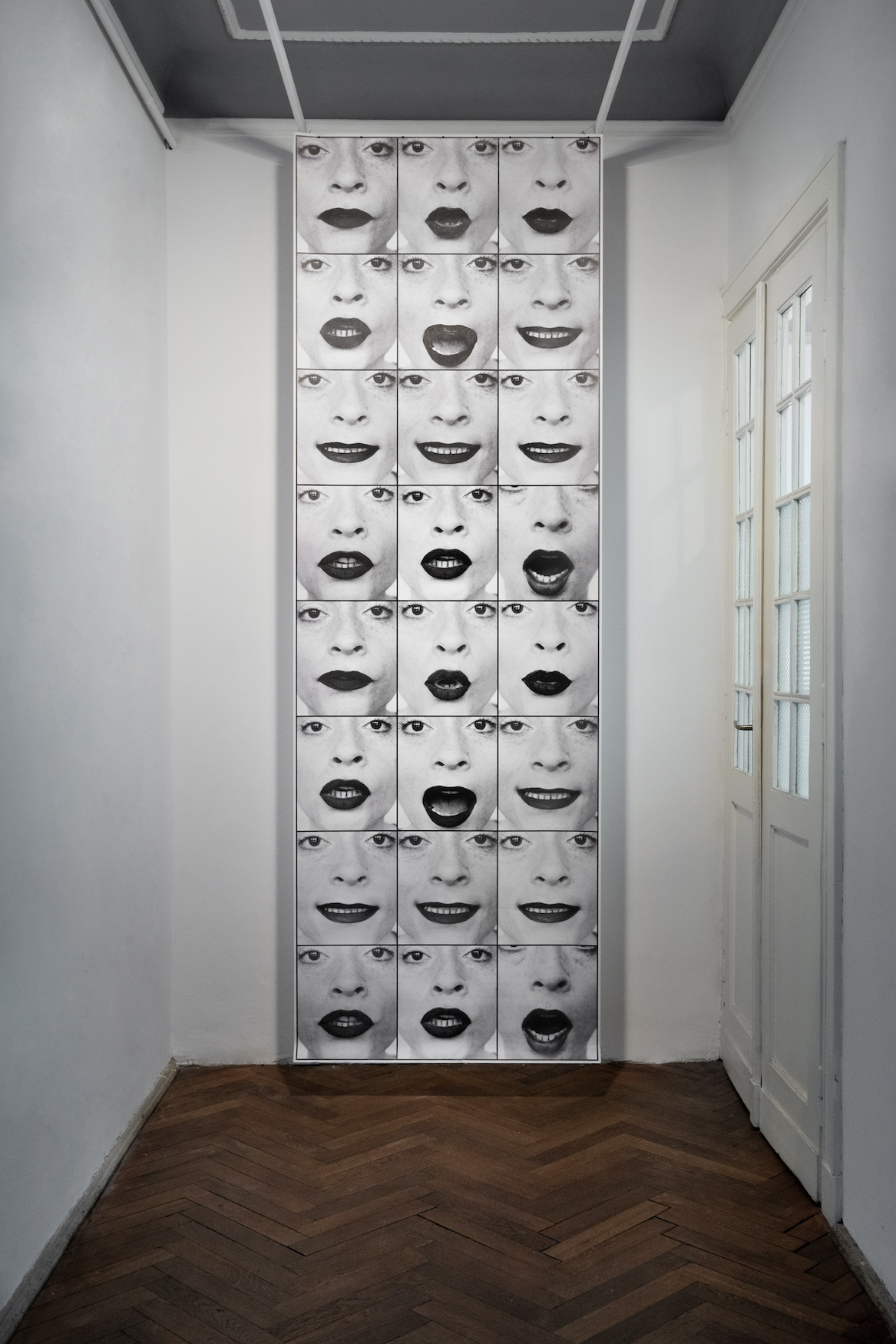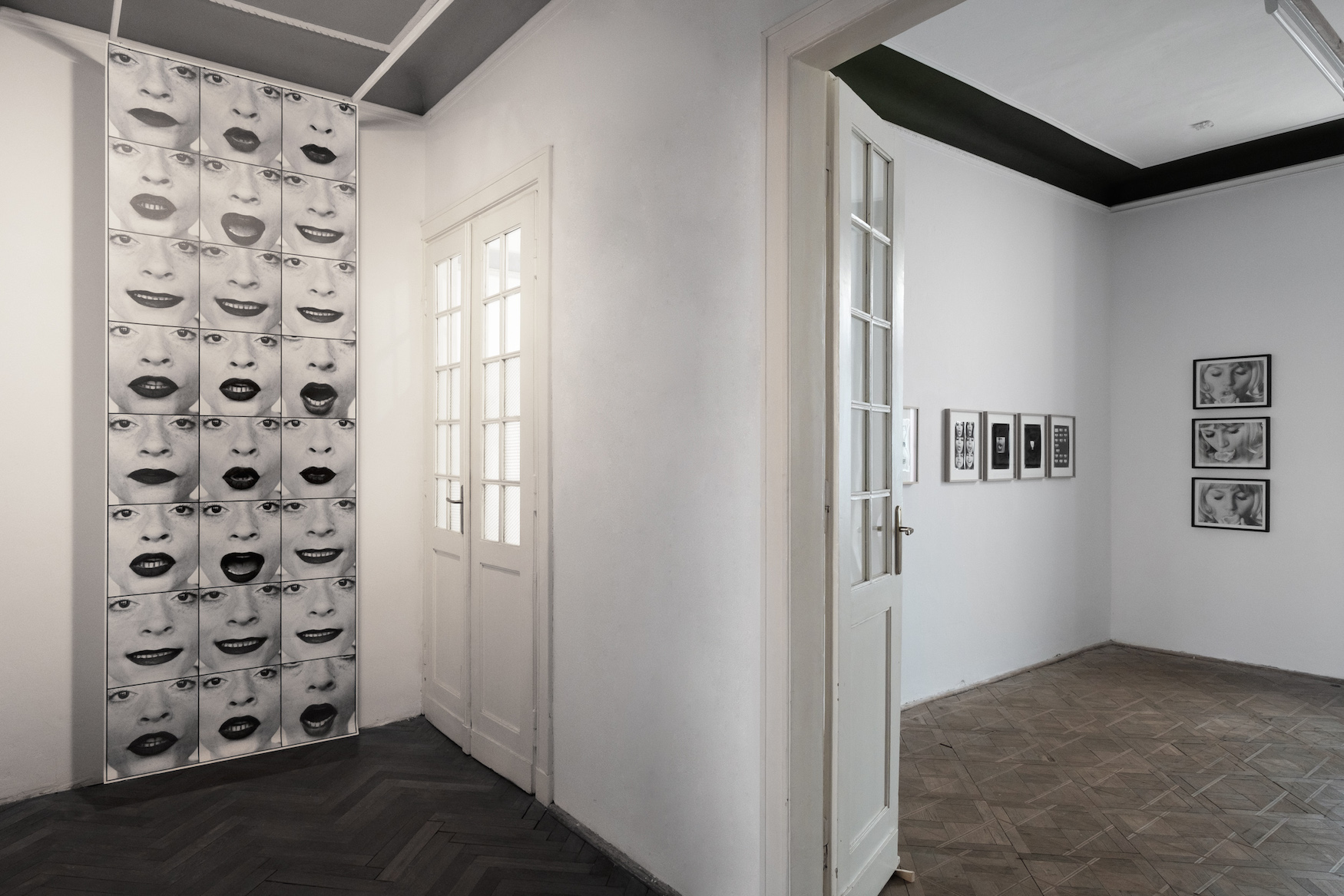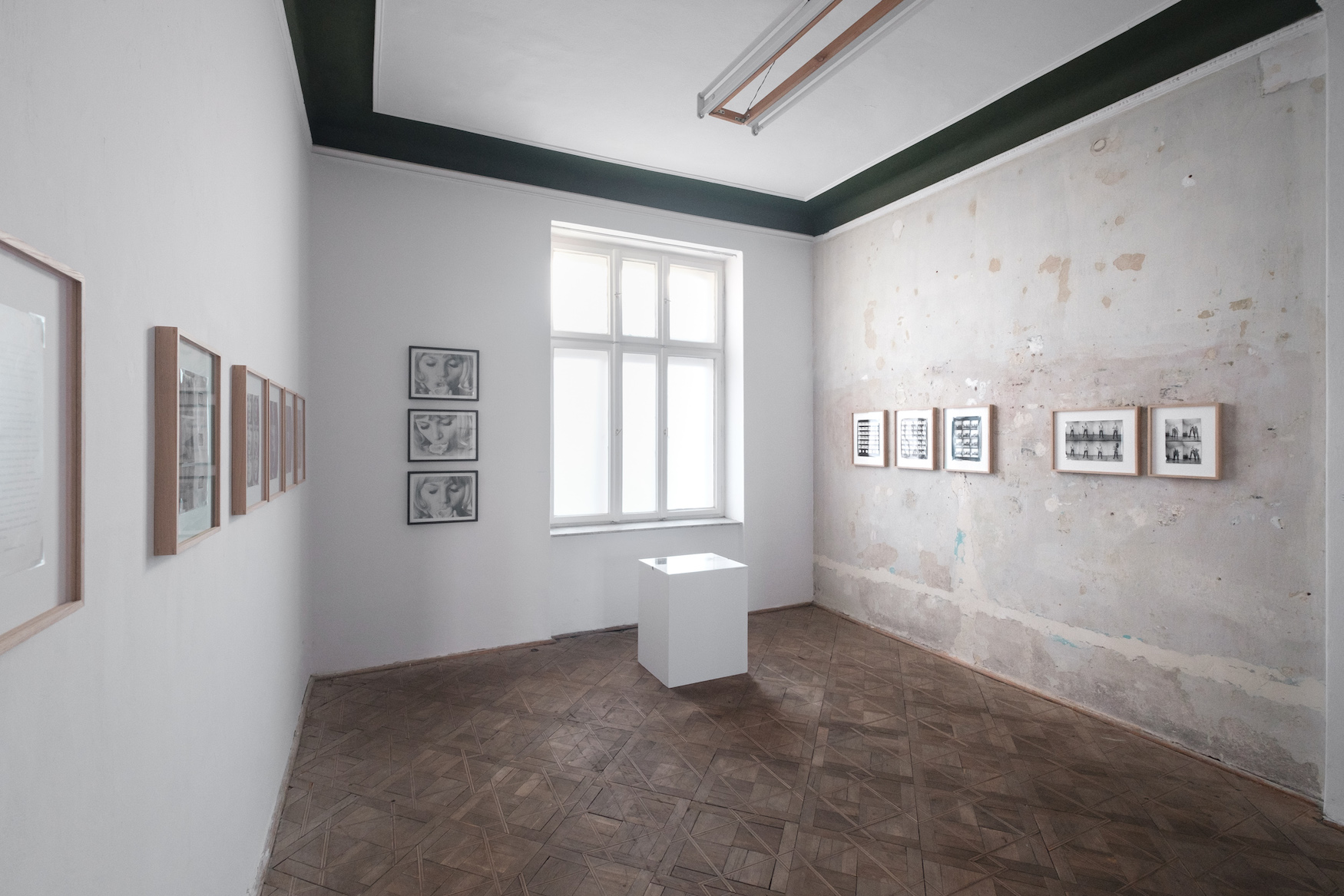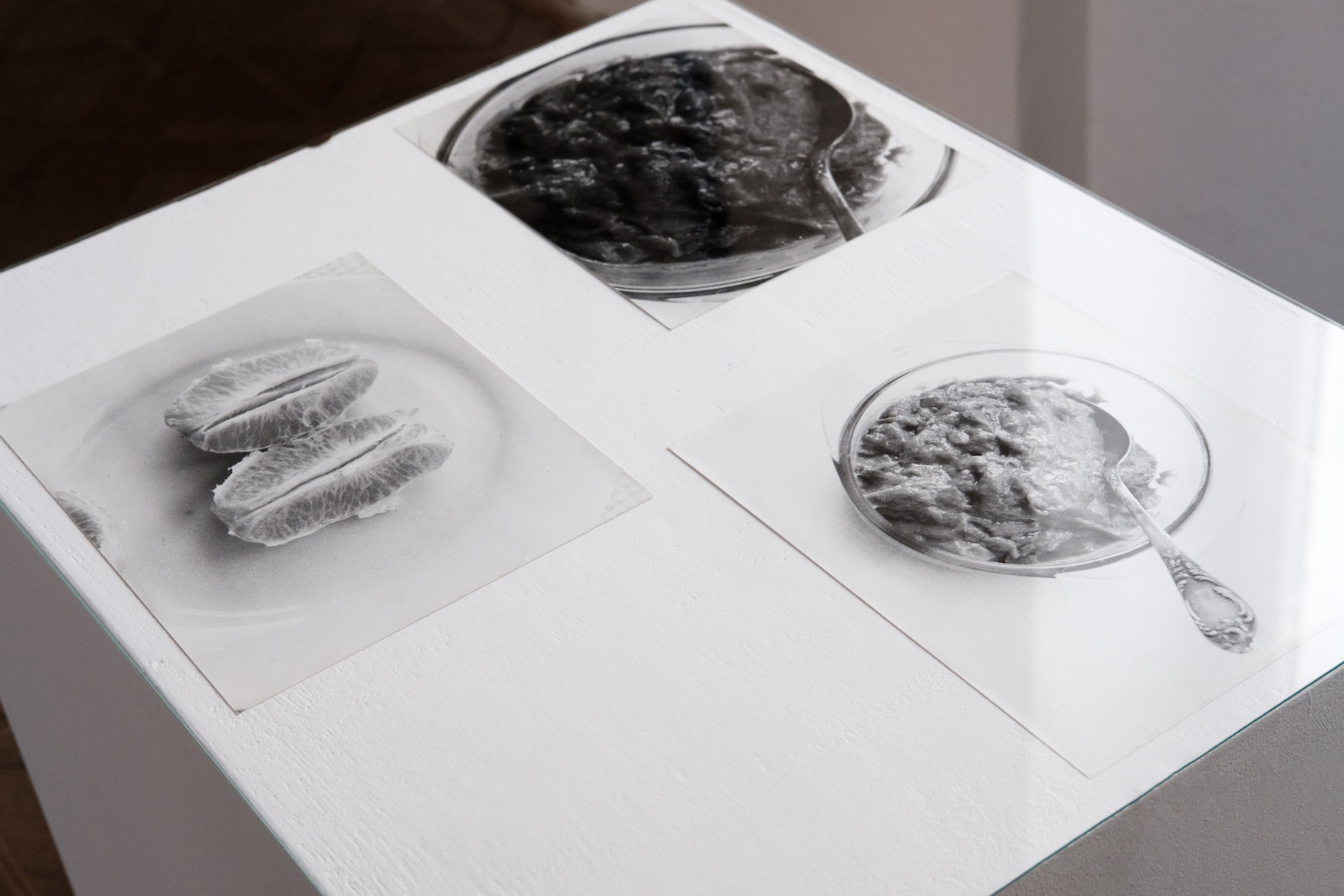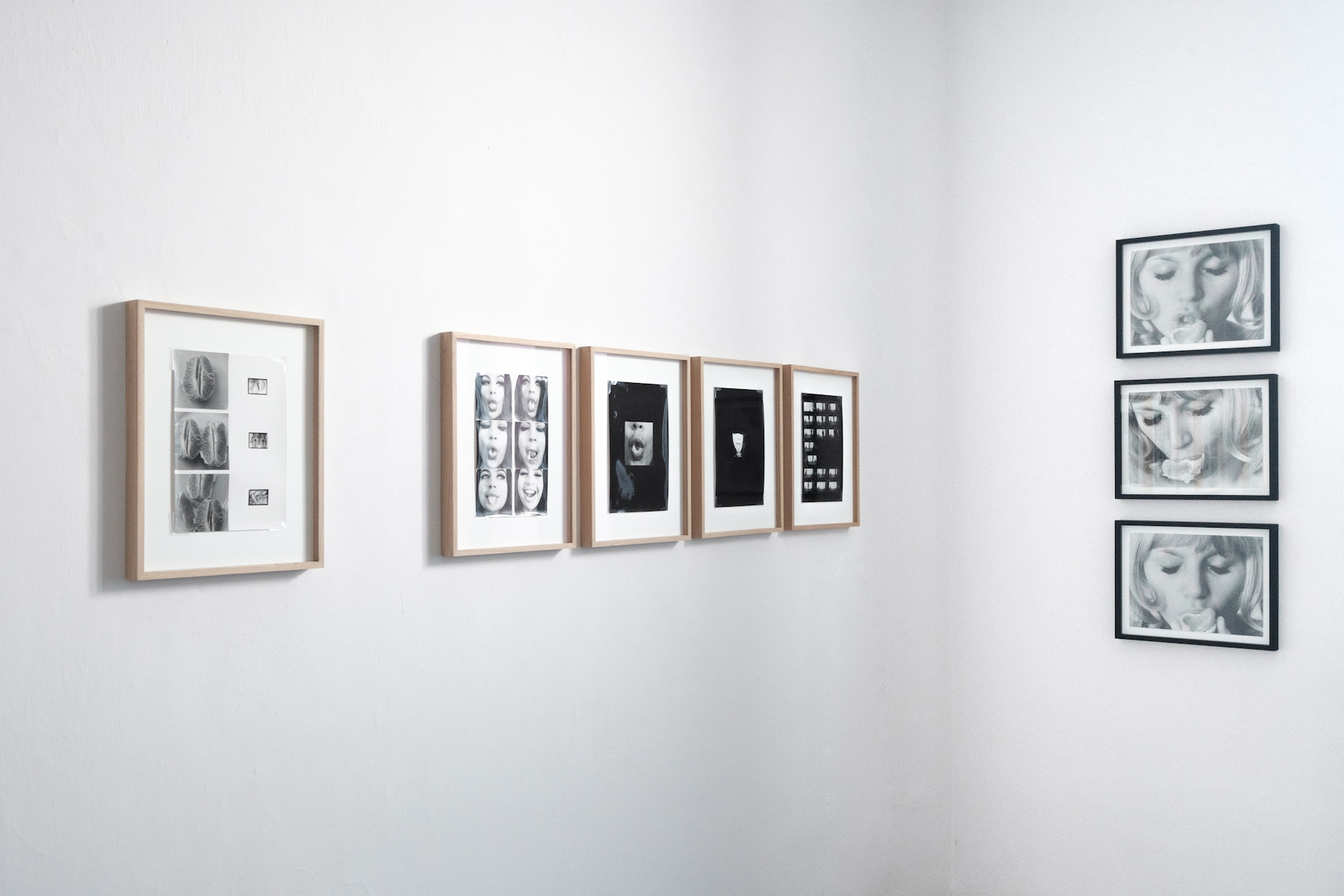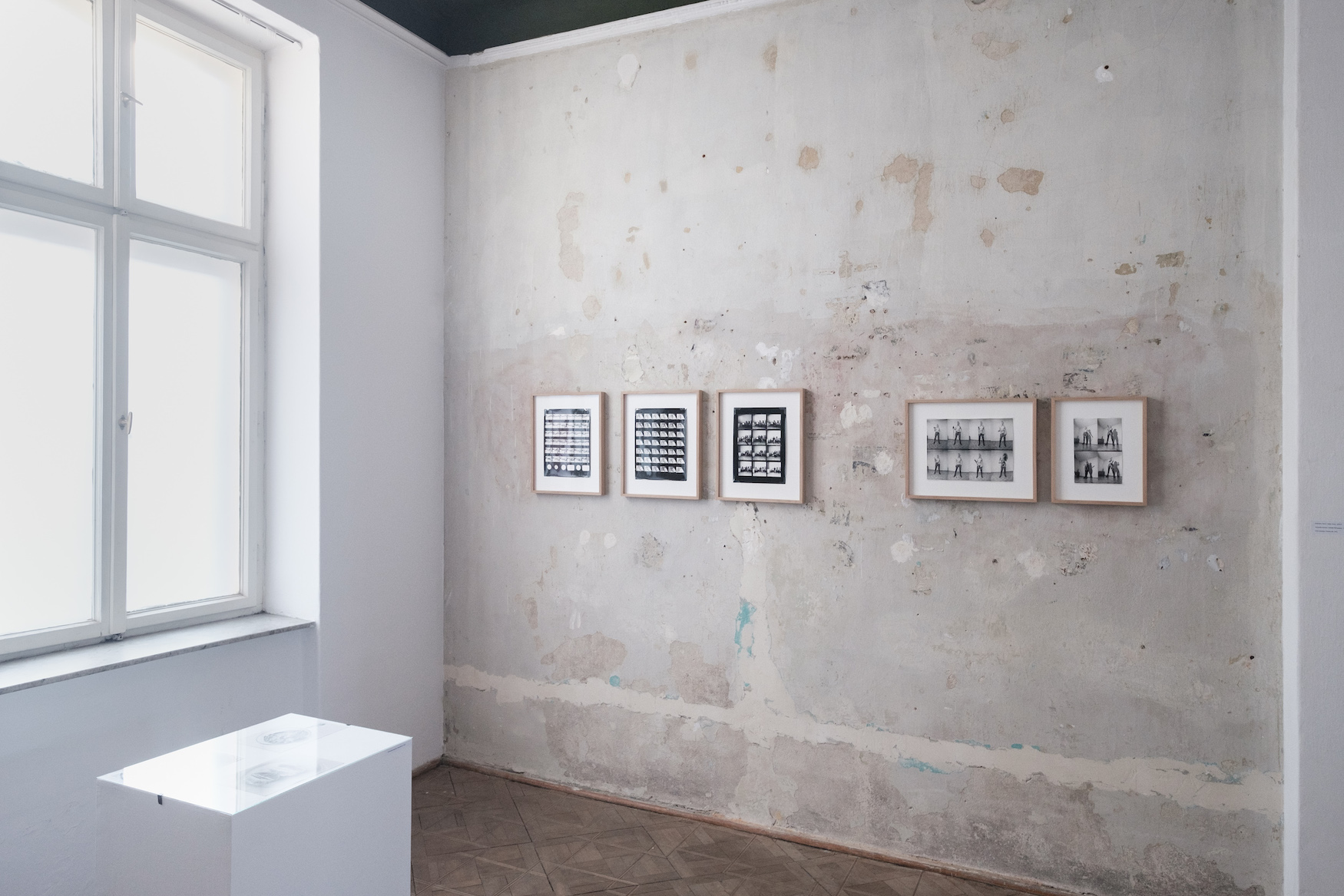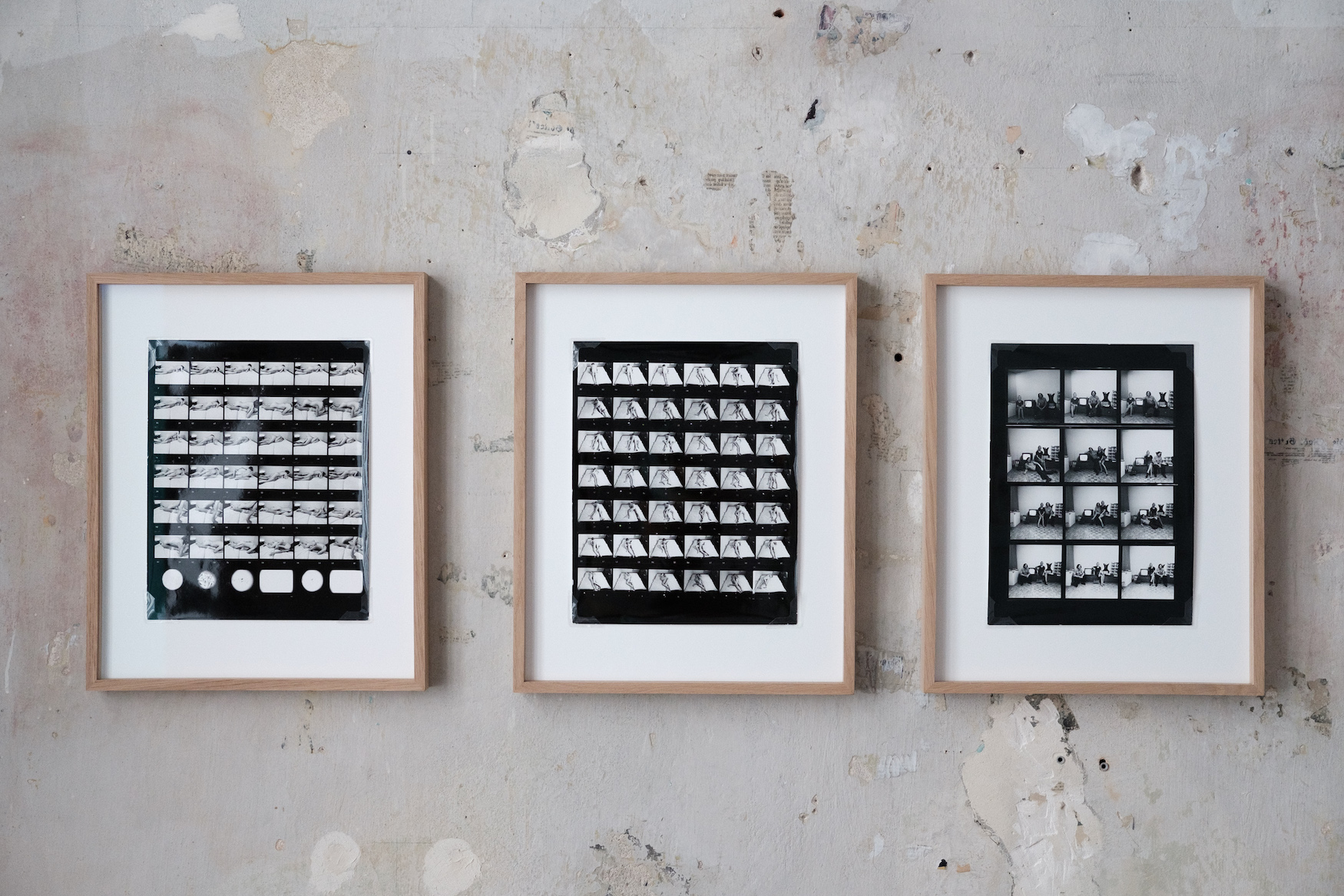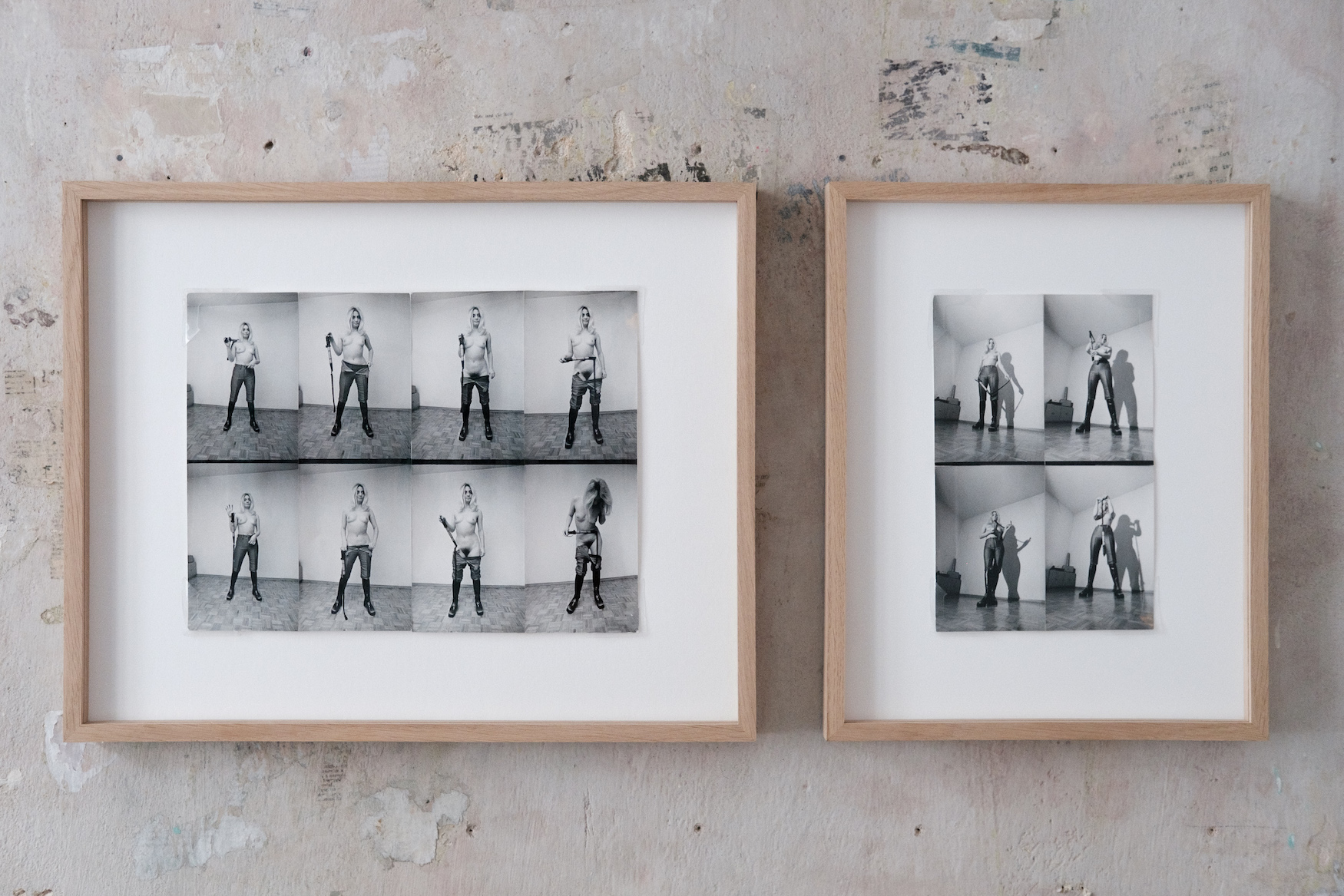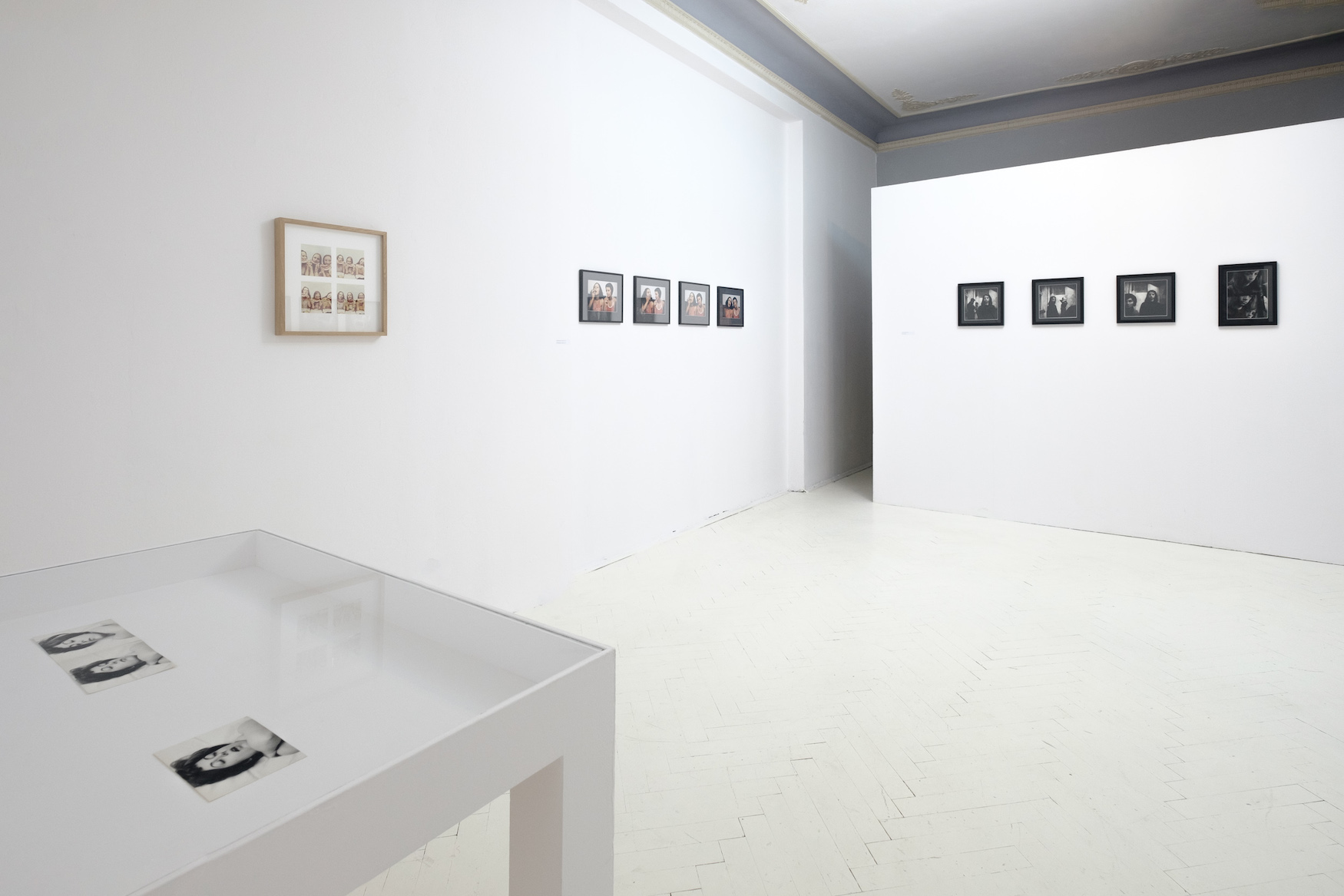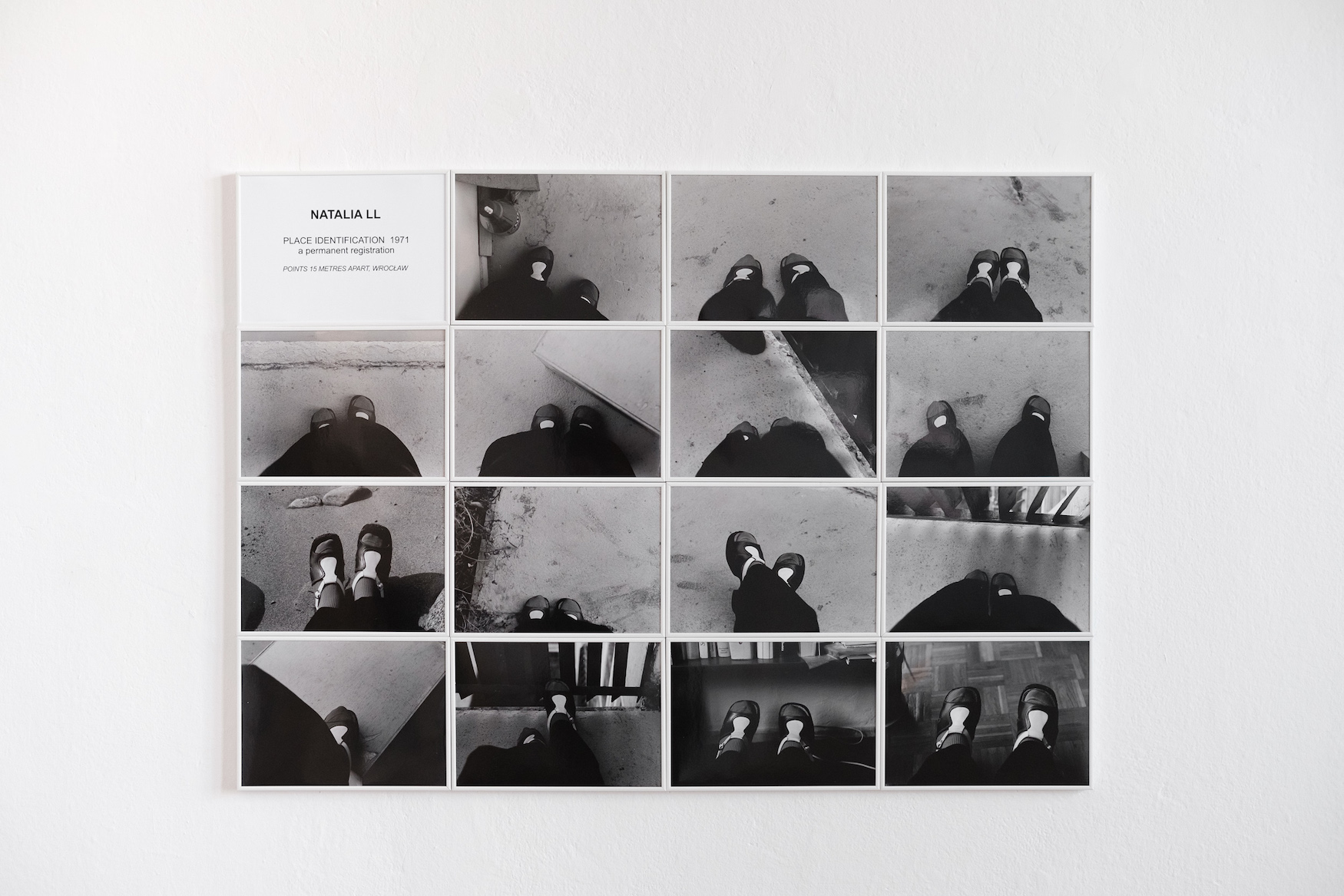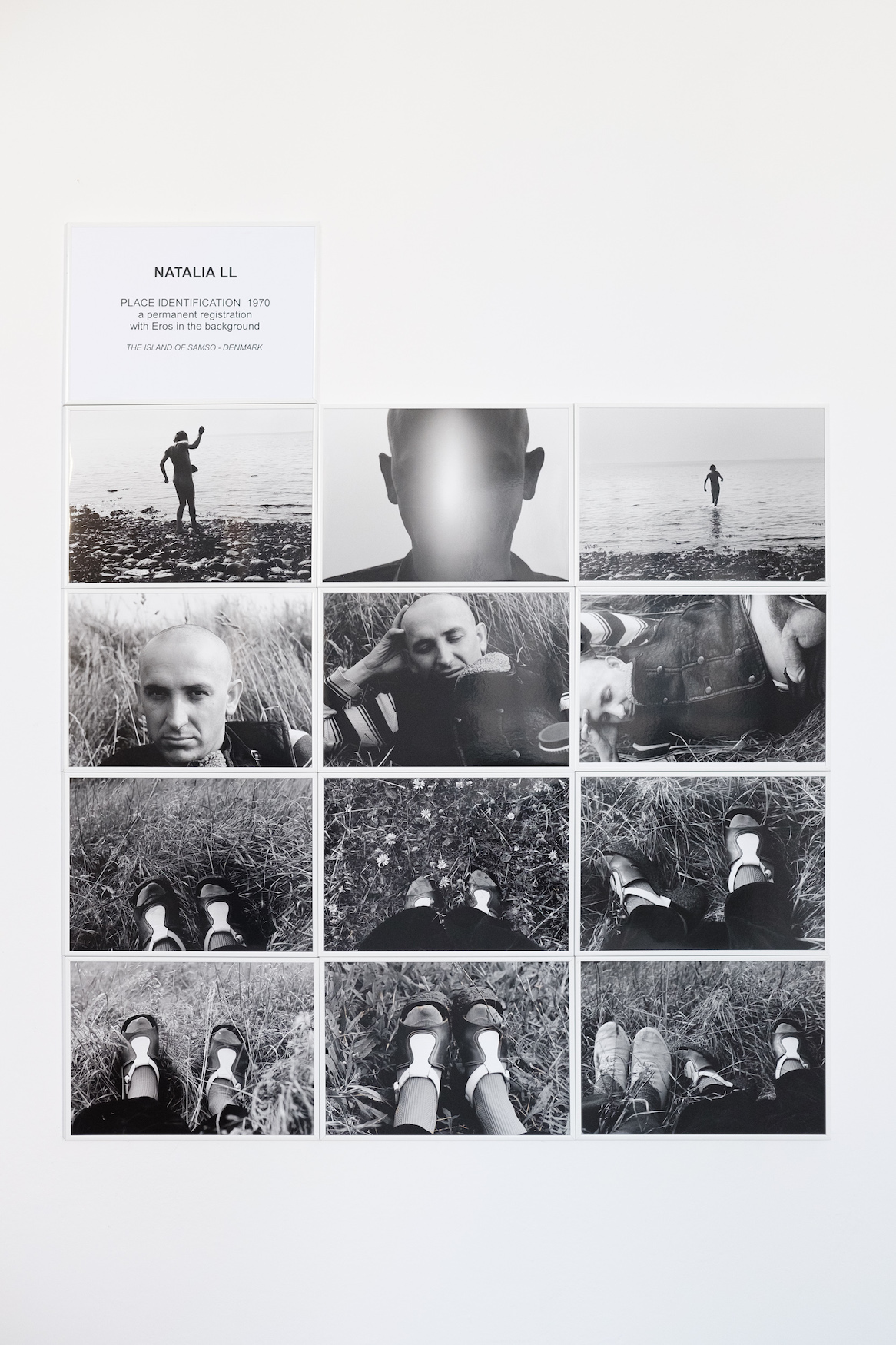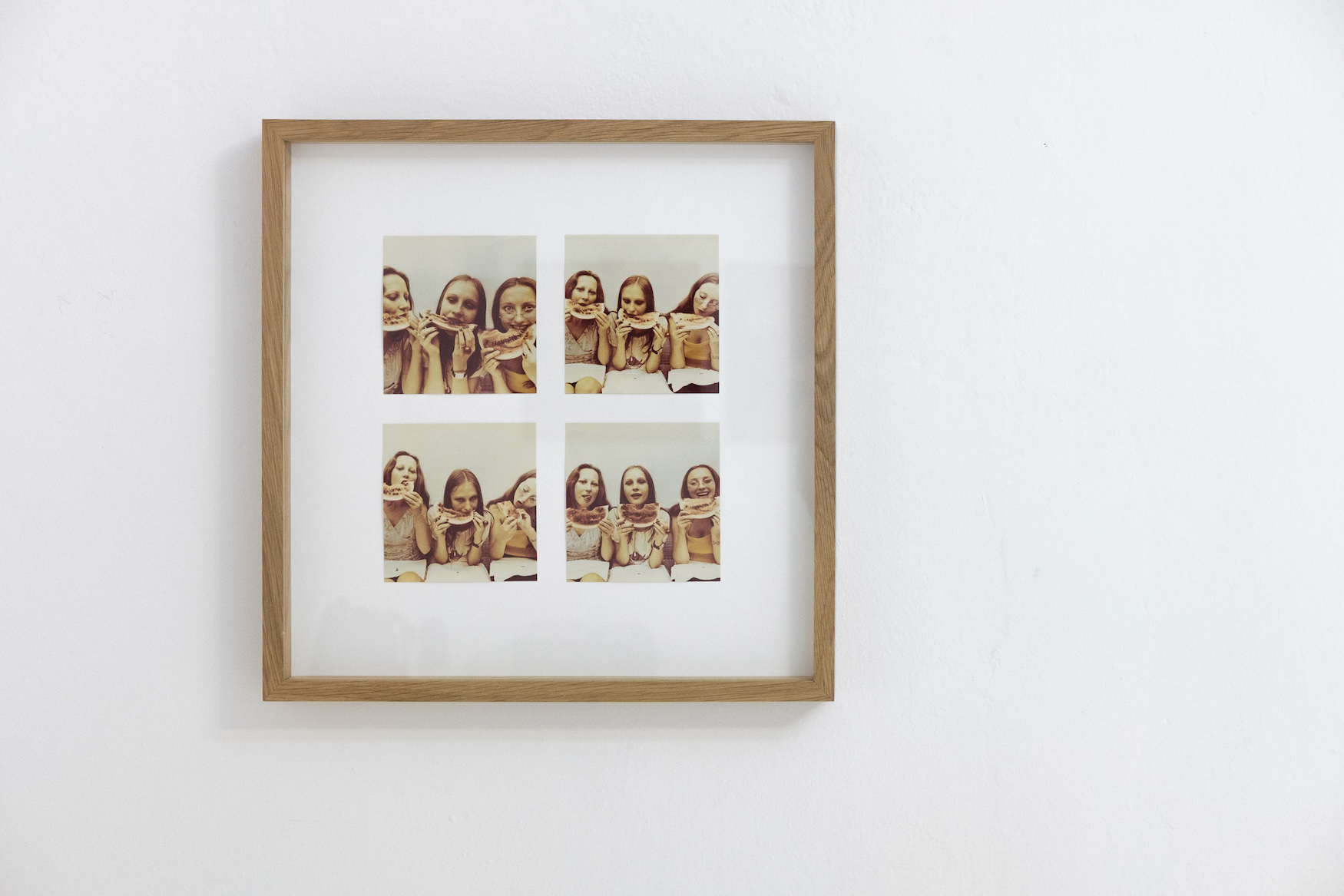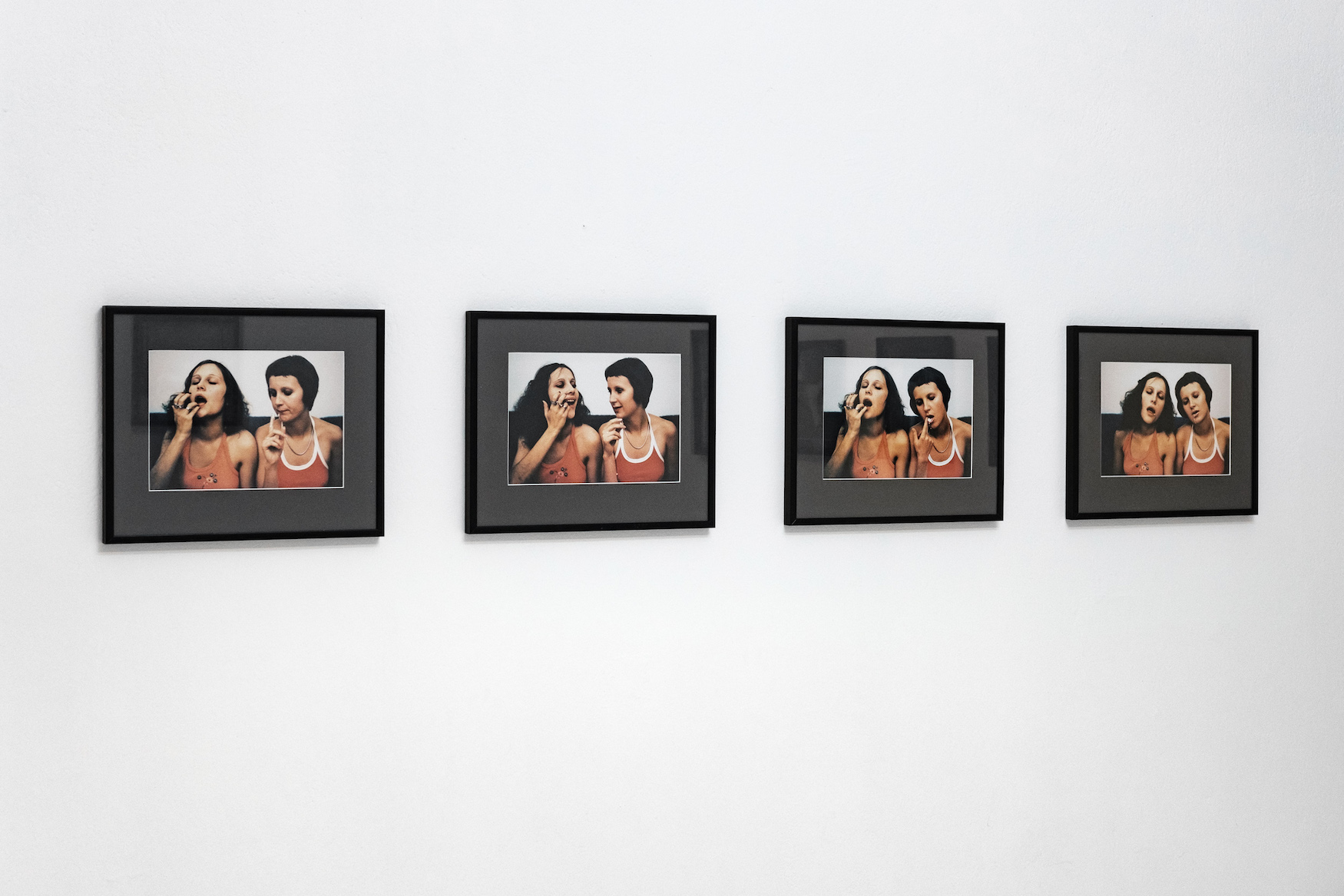kuratorka | curator: Agnieszka Rayzacher
W roku 1972 Natalia LL w manifeście “Postawa transformująca” pisała: „Sztuka realizuje się w każdym momencie rzeczywistości, każdy fakt, każda sekunda jest dla człowieka jedyna i nigdy niepowtarzalna. Dlatego zapisuję wydarzenia zwykłe i trywialne jak jedzenie, sen, kopulację, odpoczynek, wypowiadanie itp.”. To słowa młodej artystki zafascynowanej konceptualizmem – nową sztuką, odrzucającą nie tylko obiekt jako fetysz, ale przede wszystkim wkraczającą w rejony pozaartystyczne, rezygnując z gestu, natchnienia oraz artyzmu. Dla Natalii LL oraz innych artystów współtworzących grupę i galerię PERMAFO (Andrzeja Lachowicza, Zbigniewa Dłubaka oraz teoretyka Antoniego Dzieduszyckiego) najlepszym środkiem realizacji tych postulatów od początku była fotografia, a później także film.
Jednymi z pierwszych prac stanowiących próbę obiektywnego zapisu rzeczywistości był cykl “Topologia ciała” z 1967 roku. Dwoje nagich ludzi (Natalia LL i jej mąż Andrzej Lachowicz) sfotografowało się w sztywnej pozie po środku pola. Ten w założeniu chłodny zapis – rejestracja ciała za pomocą aparatu fotograficznego – niesie w sobie duży ładunek emocji. W zastygłych w sztywnej pozie ciałach czuć niezwykłą energię i związek tych dwojga ludzi. Podobnie działo się w przypadku cyklu “Fotografia intymna” z lat 1968-69, jednej z najodważniejszych prac tamtej epoki. Zdjęcia te są zapisem zwykłej czynności – miłości dwojga ludzi – ale jednocześnie są manifestem nowej, nieskrępowanej i niehierarchicznej seksualności, w której kobieta staje wreszcie równoprawną partnerką, stroną aktywną. Z kolei powstająca od 1972 roku “Sztuka konsumpcyjna” była rejestracją fotograficzną, a potem również filmową, banalnej czynności jedzenia bananów, budyniu czy parówek. Wielość znaczeń zawartych w tej pracy wzbudza emocje po dziś dzień, po prawie 50 latach – usunięcie jej z ekspozycji w Muzeum Narodowym w Warszawie w 2019 roku oraz reakcja społeczna z jaką spotkał się ten akt dowodzi, że “Sztuka konsumpcyjna”, poniekąd wbrew woli autorki, stała się pracą polityczną.
W roku 1969 amerykańska działaczka feministyczna Carol Hanisch napisała esej pod tytułem Osobiste jest polityczne (The personal is Political). Twierdziła w nim, że najbardziej osobiste sytuacje, o ile zrozumie się je w sposób dogłębny, ujawniają sposoby ubezwłasnowolnienia kobiet w społeczeństwie. Tekst ten, choć w latach 70. nie był znany w Polsce, w bardzo ciekawy sposób wiąże się z ówczesną twórczością Natalii LL, a także Jolanty Marcolli, Teresy Murak, Ewy Partum, Anny Kutery, czy Marii Pinińskiej-Bereś. Artystki te, wykorzystując elementy swojego najbliższego otoczenia, a także swoje własne ciało i wizerunek, wypowiadały się na tematy dotyczące ich samych oraz innych kobiet. Intuicyjnie wyczuwały, że przyszedł moment zmiany, a podporządkowanie kobiet i ich nieobecność w przestrzeni publicznej to relikt przeszłości. Trudno było jednak wypowiadać się na ten temat w kraju, gdzie oprócz niewielkiego grona osób nikt nie uważał tego problemu za istotny. Dlatego też, wobec braku zrozumienia oraz braku wypracowanego języka, artystki posługiwały się wielokrotnie subwersją i z humorem podchodziły do siebie samych, do zwykłych czynności i do banalnej codzienności. Widzimy to nie tylko w Sztuce konsumpcyjnej Natalii LL, ale również w instalacji fotograficznej Słowo z 1971 roku oraz w wielu późniejszych pracach, również tych z lat 1985–2010, w których artystka odnosi się z charakterystycznym dystansem do upływającego czasu i zmian w swoim ciele.
Na wystawie “Zapisuję wydarzenia zwykłe” obok bardziej znanych prac Natalii LL zostaną pokazane nigdy nie prezentowane w Polsce odbitki, które artystka wysłała w roku 1974 na wystawę do Galerii Paramedia w Berlinie, a także fotografie i filmy ukazujące codzienność i pracę artystki w jej wrocławskim mieszkaniu, pełniącym wielokrotnie rolę studia.
Wystawa zrealizowana we współpracy z Festiwalem Konteksty w Sokołowsku.
~
In 1972, in a manifesto “Postawa transformująca” (Transformative Attitude) Natalia LL wrote: “Art is in the process of becoming in every instant of reality: to the individual every fact, every second is fleeting and unique. That is why l record common and trivial events like eating, sleeping, copulation, resting, speaking etc”. These are the words of a young artist fascinated with new art – conceptualism, which not only rejected object as a fetish but, most importantly, it entered non-artistic areas at the same time giving up on gesture, afflatus, and artistry. For Natalia LL and artists, who co-created PERMAFO group with her (Andrzej Lachowicz, Zbigniew Dłubak and Antoni Dzieduszycki) the best means of realization of these postulates were photography and later also film.
One of the first works that constituted the attempt to objectively record reality was the cycle “Topologia ciała” (Topology of the Body) dated 1967. Two naked people (Natalia LL and her husband Andrzej Lachowicz) photographed themselves in a stiff pose in the middle of a field. This assumedly cold record – a record of a body with a photo camera carries a vast emotional charge. The bodies congealed in a stiff pose beam with amazing energy and reveal the relationship between those two people. The situation is similar in case of the cycle “Fotografia intymna” (Intimate Photography) dated 1968-69, which is one of the boldest works of the epoch. These photographs are a record of an ordinary activity – love between two people and, at the same time, a manifesto of new sexuality, which is uninhibited, non-hierarchical; within which a woman finally becomes an equal partner, an active side. In turn, “Sztuka konsumpcyjna” (Consumer Art) that was created in 1972 was firstly a photo and then film record of a trivial activity such as eating bananas, pudding or sausages. This work and the many meanings it conveys, until this day, after almost 50 years, stirs up huge emotions and generates amazing energy, after almost 50 years – its removal from the exhibition in the National Museum in Warsaw in 2019 and the society’s reaction this act triggered only prove the fact that Consumer Art, in some way despite the artist’s will, has become a political work of art.
In 1969, Carol Hanisch, an American feminist activist, wrote an essay entitled The Personal Is Political. She claimed that the most personal situations, given that they are understood deeply, reveal the ways women are incapacitated in the society. Although this text was not known in Poland in the ‘70s, it is connected in an interesting way not only to Natalia LL’s work but also Anna Kutera, Jolanta Marcolla, Teresa Murak, Ewa Partum, Maria Pinińska-Bereś. By using the elements of their closest surroundings, their body and image, these artists voiced their opinions on a topic important to them as it referred to themselves and other women. They intuitively sensed that a moment of change had come and the submission of women and their absence in public space was a relic of the past. It was difficult to express their opinion on this topic in a country, where besides a narrow group of people, no one considered this matter important. That is why due to lack of understanding and developed language, the artists often used subversion and humor when they were referring to themselves, ordinary activities and trivial everyday life. We can see that not only in Natalia LL’s Consumer Art but also in a photo installation “Słowo” (Word) dated 1971 and many later works dated from 1985-2010, in which with a peculiar distance the artist relates to passing time and changes that occur in her body.
Next to Natalia LL’s better known works, the exhibition I Record Common Events will also present photographs never displayed in Poland that the artist sent to Paramedia gallery in Berlin in 1974 for an exhibition. The exhibition will also show photographs and films that present the artist’s everyday life and work in her apartment in Wrocław that also served as her studio.
Exhibition organised in cooperation with Festival Contexts from Sokołowsko.


